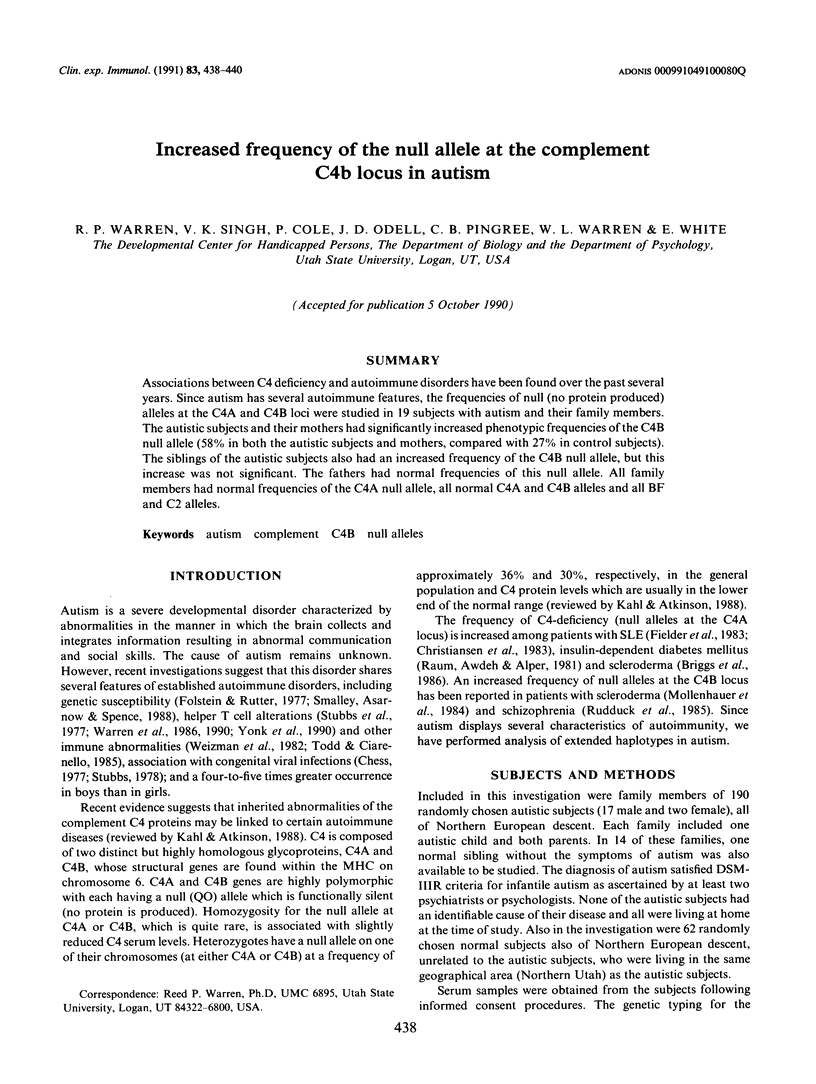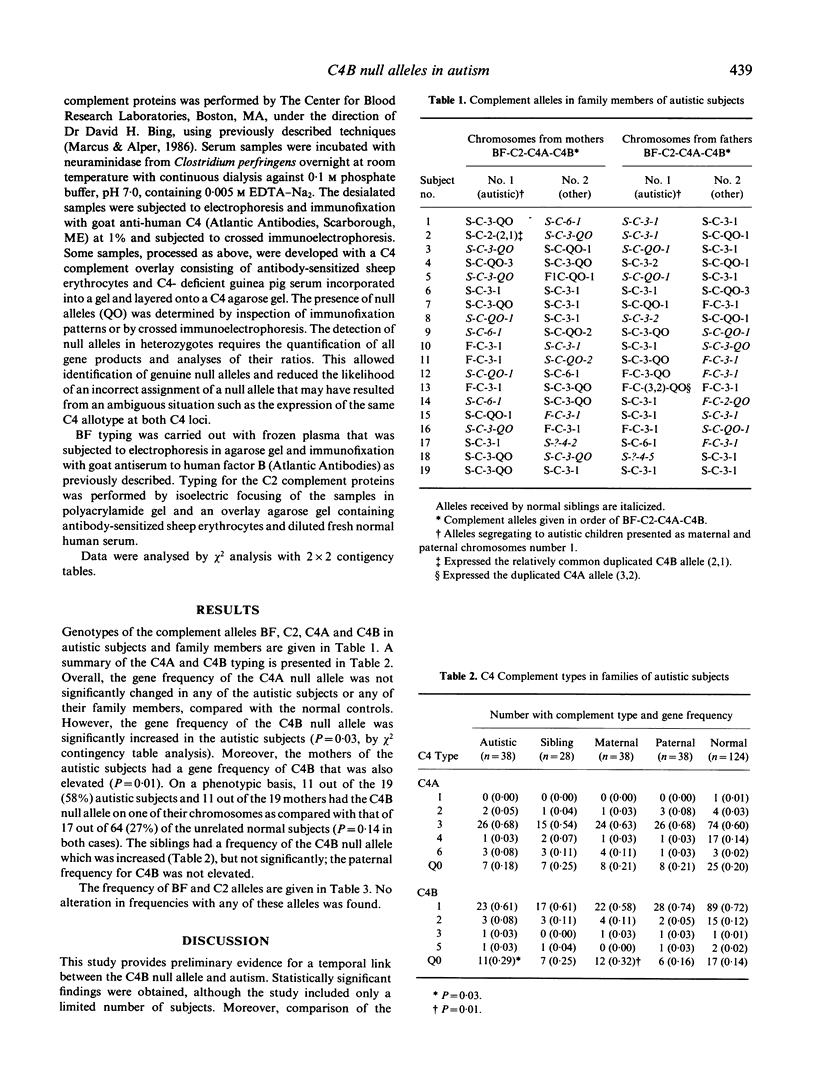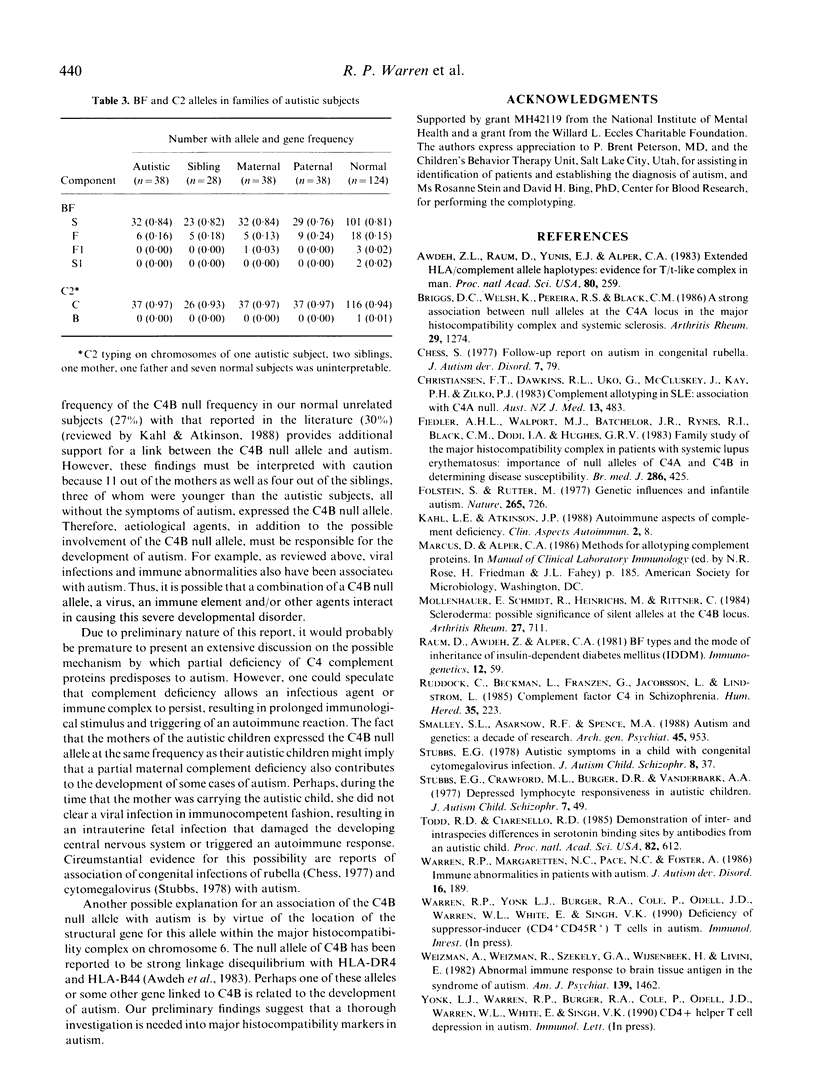Abstract
Associations between C4 deficiency and autoimmune disorders have been found over the past several years. Since autism has several autoimmune features, the frequencies of null (no protein produced) alleles at the C4A and C4B loci were studied in 19 subjects with autism and their family members. The autistic subjects and their mothers had significantly increased phenotypic frequencies of the C4B null allele (58% in both the autistic subjects and mothers, compared with 27% in control subjects). The siblings of the autistic subjects also had an increased frequency of the C4B null allele, but this increase was not significant. The fathers had normal frequencies of this null allele. All family members had normal frequencies of the C4A null allele, all normal C4A and C4B alleles and all BF and C2 alleles.
Full text
PDF


Selected References
These references are in PubMed. This may not be the complete list of references from this article.
- Awdeh Z. L., Raum D., Yunis E. J., Alper C. A. Extended HLA/complement allele haplotypes: evidence for T/t-like complex in man. Proc Natl Acad Sci U S A. 1983 Jan;80(1):259–263. doi: 10.1073/pnas.80.1.259. [DOI] [PMC free article] [PubMed] [Google Scholar]
- Briggs D. C., Welsh K., Pereira R. S., Black C. M. A strong association between null alleles at the C4A locus in the major histocompatibility complex and systemic sclerosis. Arthritis Rheum. 1986 Oct;29(10):1274–1277. doi: 10.1002/art.1780291014. [DOI] [PubMed] [Google Scholar]
- Christiansen F. T., Dawkins R. L., Uko G., McCluskey J., Kay P. H., Zilko P. J. Complement allotyping in SLE: association with C4A null. Aust N Z J Med. 1983 Oct;13(5):483–488. doi: 10.1111/j.1445-5994.1983.tb02699.x. [DOI] [PubMed] [Google Scholar]
- Fielder A. H., Walport M. J., Batchelor J. R., Rynes R. I., Black C. M., Dodi I. A., Hughes G. R. Family study of the major histocompatibility complex in patients with systemic lupus erythematosus: importance of null alleles of C4A and C4B in determining disease susceptibility. Br Med J (Clin Res Ed) 1983 Feb 5;286(6363):425–428. doi: 10.1136/bmj.286.6363.425. [DOI] [PMC free article] [PubMed] [Google Scholar]
- Folstein S., Rutter M. Genetic influences and infantile autism. Nature. 1977 Feb 24;265(5596):726–728. doi: 10.1038/265726a0. [DOI] [PubMed] [Google Scholar]
- Smalley S. L., Asarnow R. F., Spence M. A. Autism and genetics. A decade of research. Arch Gen Psychiatry. 1988 Oct;45(10):953–961. doi: 10.1001/archpsyc.1988.01800340081013. [DOI] [PubMed] [Google Scholar]
- Stubbs E. G. Autistic symptoms in a child with congenital cytomegalovirus infection. J Autism Child Schizophr. 1978 Mar;8(1):37–43. doi: 10.1007/BF01550276. [DOI] [PubMed] [Google Scholar]
- Warren R. P., Margaretten N. C., Pace N. C., Foster A. Immune abnormalities in patients with autism. J Autism Dev Disord. 1986 Jun;16(2):189–197. doi: 10.1007/BF01531729. [DOI] [PubMed] [Google Scholar]
- Weizman A., Weizman R., Szekely G. A., Wijsenbeek H., Livni E. Abnormal immune response to brain tissue antigen in the syndrome of autism. Am J Psychiatry. 1982 Nov;139(11):1462–1465. doi: 10.1176/ajp.139.11.1462. [DOI] [PubMed] [Google Scholar]


